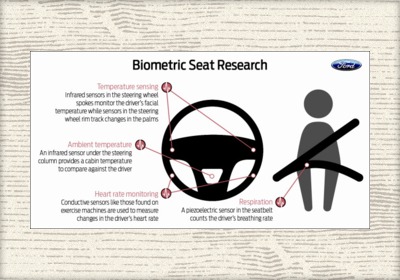Ford creates ‘driver workload estimator’ to reduce driver distraction
Tue, 10 Jul 2012Ford researchers have created a ‘driver workload estimator’ help reduce driver distraction by filtering infotainment and communication distractions.
Researchers at Ford are working on a system that would use information submitted by the vehicle and the driver's body to prioritize what information can be displayed and at what time.
With the ever-increasing demand for advanced infotainment systems, the chance of driver distraction has also risen as more displays and controls are integrated into the latest models. It’s a balance manufacturers are under increasing pressure to strike.
Krishna Jayaraman, a research analyst from Frost & Sullivan says: "The availability of Internet connectivity has led to the proliferation of various web services, Smartphone applications and entertainment-related functions inside vehicles. This has led to the need for large and intelligent information display systems, which could house all the information content."
Information transmitted from the throttle, the brakes, radar sensors and integrated cameras as well as information from the driver's body – collected via biometric sensors in the steering wheel, seat and seatbelt – would serve as filters for infotainment and communications depending on the driver's stress levels.
The car's sensors would be able to determine driving conditions outside of the car and would, for example, detect the pressure on the gas pedal and heart rate of the driver, allowing the system to automatically block phone calls and limit volume controls. It would then engage the ‘Do Not Disturb' feature – already available with the MyFord Touch system.
Ford's research team built a prototype seat with integrated sensors to demonstrate how it would collect data. Temperature sensors track the driver's facial and hand temperature, ambient temperature sensors measure the cabin temperature, heart rate sensors monitor changes in the heart rate and a piezoelectric sensor in the seatbelt counts the driver's breathing rate.
Gary Strumolo, Manager of Vehicle Design and Infotronics, Ford Research and Innovation, says: "While these features are still in research, they show significant opportunity for us to leverage data already being captured by the vehicle and apply an intelligent decision-making system to simplify the driving experience."
Related articles:
Ford announces new Silicon Valley research laboratory
Essay: The Onset of In-Car Apps
By Rufus Thompson

